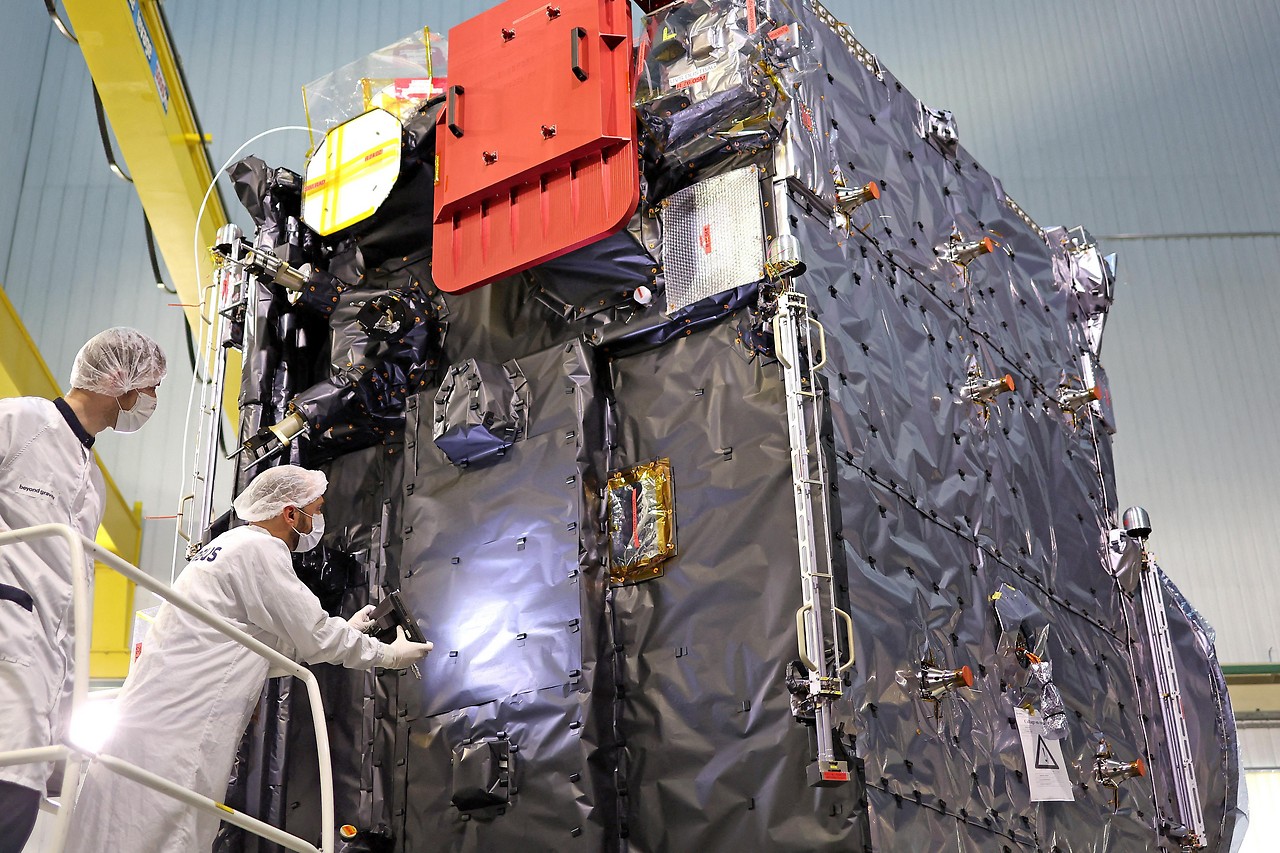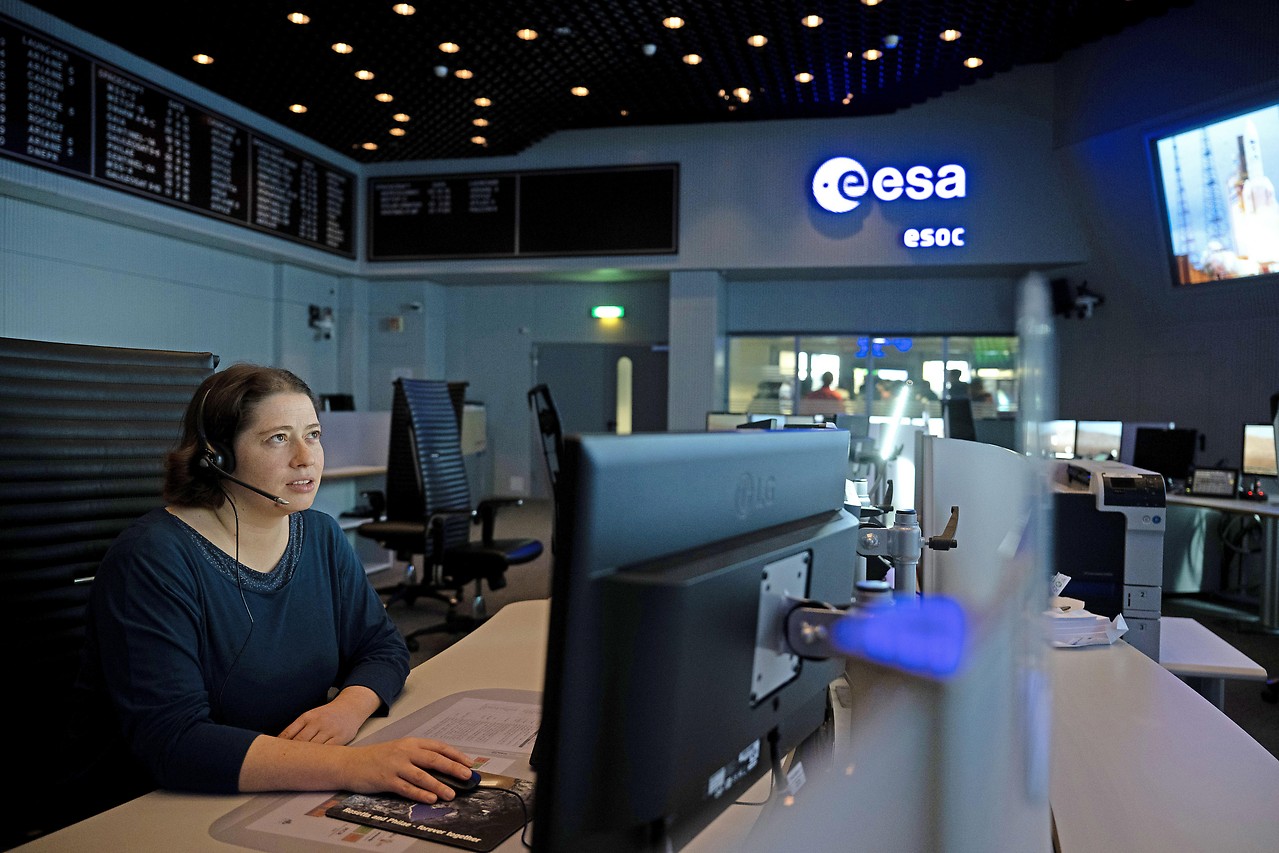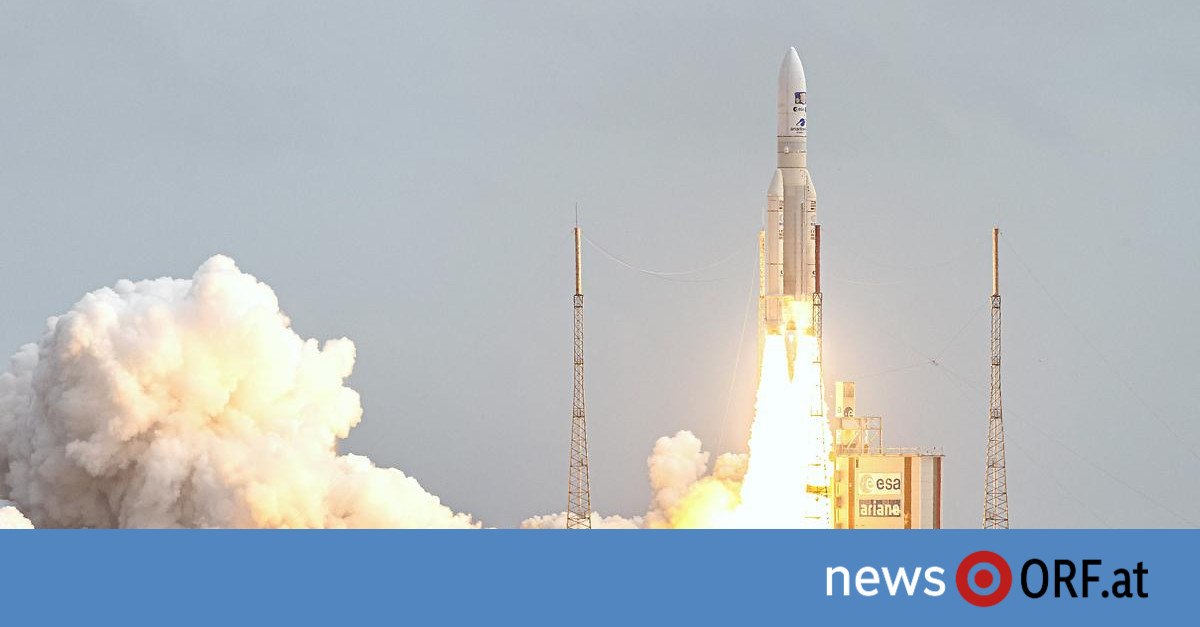On the European Space Agency’s (ESA) first expedition to the outer solar system, the 5.2-ton (launch weight) probe will be on the road for eight years. It will fly once around Venus and three times around Earth to gain momentum for the long journey. The largest planet in the solar system, with an equatorial diameter of about 143,000 km, is scheduled to be reached in July 2031.
Then the probe will make 35 flybys of Europa, Callisto and Ganymede in over three years. Then Jupiter’s strong gravity is used to guide the spacecraft into orbit around Ganymede. By September 2035, JUICE will orbit this largest moon in the solar system – as the first probe ever to enter orbit around a moon other than Earth’s. At the end of the mission, it must be brought to a crash-set on Ganymede.
The gas giant needs to be better understood
JUICE will study the Jovian system as a prime example of gas giants in the universe. To do this, the probe is taking a closer look at the complex environment of the planet’s more than 90 moons. To understand how a typical gas giant forms, how it functions and how its moons formed or formed, Jupiter’s turbulent atmosphere, strong magnetic field, dust rings and small moons are analyzed.
There are many questions for science to answer: why is the planet’s Great Red Spot shrinking, and what chemical processes are taking place inside? How does its strong magnetic field affect conditions on icy moons? What does volcanic activity on Jupiter’s moon Io look like?
Ice moons ‘primary target’
But attention is focused on the three icy moons, particularly the supermoon Ganymede, which the European Space Agency calls its “primary target”. Ganymede, Callisto, and Europa are believed to harbor oceans of liquid water beneath their icy crusts. This will be one of the most important prerequisites for the fact that life can exist there or once existed.
Direct evidence of life would not be possible with the €1.6 billion mission. Instead, it aims to see if there are places where there are conditions such as water, biologically important elements, energy, and stability that could support life.

Europe is under strong radiation
Angela Dietz of the European Space Agency’s Control Center in Darmstadt, Germany, saw “the greatest potential” for this when presenting the mission in Europe, because this moon is closer to Jupiter and therefore has more heat and energy. Europa has a diameter of about 3,100 km, and it is the smallest of the four large moons of Jupiter, also known as the “Galilean moons”, which are slightly smaller than Earth’s moon (3,500 km).
Because of the intense radiation around this moon close to Jupiter, JUICE will only fly over Europa twice, coming within 400 kilometers of its bumpy, icy surface, from which water vapor shoots into space via geysers. The spacecraft will search for biosignatures and water sediments, studying their surface, subsurface, and geology.

“JUICE” will fly near Callisto, the second largest moon of Jupiter and the third largest moon in the solar system with a diameter of 4,800 km, 21 times, and approach the surface full of inactive craters to a distance of 200 km. According to the European Space Agency (ESA), the main goal of this satellite’s analyzes is to gain insight into the environment of early Jupiter.
Ganymede: a moon with a magnetic field
The reason Ganymede is so unique is because research has focused on this, the largest moon in the solar system with a diameter of about 5,300 kilometers, which is even larger than Mercury. Ganymede is the only moon in the solar system that generates its own magnetic field. During twelve flights at a distance of 400 km and the subsequent orbit at an altitude of 500 km, not only this magnetic field, but also the hidden ocean, the core of the celestial body and its interaction with Jupiter, will be explored.
In order to achieve all this, JUICE has ten instruments on board, measuring magnetic and gravitational fields as well as charged particles and examining surfaces with cameras and spectrometers in a wide range of wavelengths. In addition to these optical cameras and remote sensing systems, there is also a radar echo sounder, laser altimeter, and magnetometer.

Ganymede’s surface is measured using a laser altimeter, among other things to obtain information about tidal deformation caused by the gas giant’s enormous gravitational force. Such changes in elevation could also allow for statements to be made about whether there is a global ocean on Ganymede, as predicted by the model calculations.
Research from Austria is included
Austria is one of 23 countries that participated in the “juice”. The Institute for Space Research (IWF) of the Austrian Academy of Sciences (ÖAW) in Graz is involved in three instruments. In collaboration with the Institute of Experimental Physics at the Technical University (TU) Graz, IWF researchers have developed a new type of quantum interference magnetometer – more on this at steiermark.ORF.at.
It is part of a magnetic sensor system built together with Imperial College London and TU Braunschweig. The Graz sensor is located at the end of a ten-meter-long arm so that it is not affected by the probe’s magnetic fields.
“Literally look inside”
With magnetometers, the oceans under the ice layer of moons in particular should be examined. As it moves through Jupiter’s magnetic field, electric currents should be induced in the water, which in turn create magnetic fields. By measuring them, “we can literally look at the moons. The more accurately we know the magnetic field, the easier it will be to study the deep oceans,” said Werner Magnes of the IWF.
The sensor from Graz records the smallest fluctuations in the magnetic field, with which the researchers want to determine the size of the oceans. Combined with data from other instruments involving the IMF, they also hope to more accurately determine the salinity of the water under the ice.
Jupiter mission years down the road
The Jupiter mission has been postponed to Friday due to bad weather. If all goes well, the space probe should reach its destination in a good eight years and send new discoveries about Jupiter back to Earth.
Harsh environment for instrumentation
GeoSphere Austria has made it possible to calibrate magnetic field sensors at the Conrad underground observatory in Trafelberg in Lower Austria, which is completely magnetically unaffected due to its remoteness. The IWF has also been involved in the calibration of radiowave antennas and is a member of the Charged Particle Measurement Instrument team. The Viennese company Terma provided the power source for the space probe on the launch pad and the radio communication test equipment for “JUICE”.
The harsh environment poses a particular challenge for the instruments, as the probe is subjected to 250°C when it passes over Venus and 230°C below Jupiter. The thermal insulation of “JUICE” made by the Vienna space company Beyond Gravity, which is made of more than 20 layers of coated polyimide film and aims to achieve the insulation effect of a meter-thick brick wall in the vacuum of space, ensures a stable indoor temperature.
In addition, the protective shields should protect sensitive electronics from the intense radiation around Jupiter. Another challenge is sunlight, which is 25 times dimmer than Earth’s and is captured by the 85 square meter solar cells. In addition, there is a distance of millions of kilometers from Earth, which is why a powerful on-board computer must be able to solve some problems by itself.

“Total coffee aficionado. Travel buff. Music ninja. Bacon nerd. Beeraholic.”







More Stories
Researchers detect extremely high-energy gamma rays
Anxiety disorders in old age increase the risk of dementia
Researchers are particularly fascinated by these exoplanets.